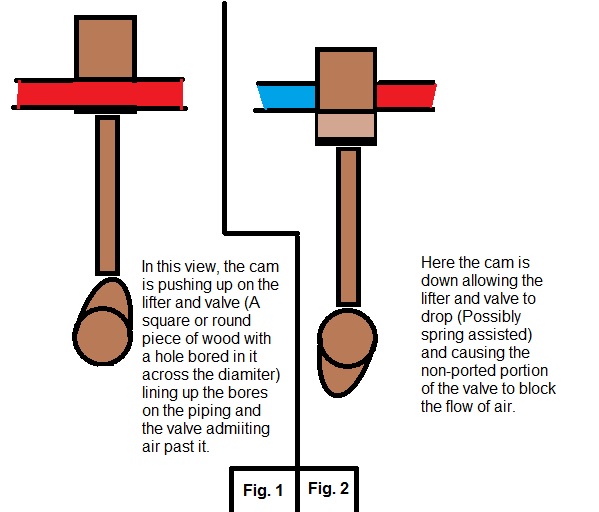Train_Fan
Active Member
- Joined
- Apr 16, 2013
- Messages
- 25
- Reaction score
- 8
Hi all,
For my next project I plan on making a straight 3 engine out of wood, using actual ball bearings that I have en masse and for operation off of pressure not volume.
My one roadblock is that I plan to make this as close to an auto engine as I can, and therefore intend to use camshafts and lifters for intake and exhaust, but I cannot feasibly implement rockers and normal "valves" at this time. So I have turned to you for some design input.
My idea is as follows, drawn up in my handy CAD program "Microsoft Paint":

Given higher-ish pressures of ~20psi and under, would this be the best design given the fact that would be made of maple/cherry?
Thanks much,
TF
For my next project I plan on making a straight 3 engine out of wood, using actual ball bearings that I have en masse and for operation off of pressure not volume.
My one roadblock is that I plan to make this as close to an auto engine as I can, and therefore intend to use camshafts and lifters for intake and exhaust, but I cannot feasibly implement rockers and normal "valves" at this time. So I have turned to you for some design input.
My idea is as follows, drawn up in my handy CAD program "Microsoft Paint":

Given higher-ish pressures of ~20psi and under, would this be the best design given the fact that would be made of maple/cherry?
Thanks much,
TF



















![Learning AutoCAD Civil 3D 2014 [Online Code]](https://m.media-amazon.com/images/I/51F3yi9fokL._SL500_.jpg)
































![DreamPlan Home Design and Landscaping Software Free for Windows [PC Download]](https://m.media-amazon.com/images/I/51kvZH2dVLL._SL500_.jpg)







